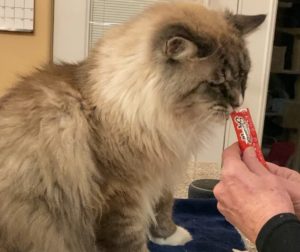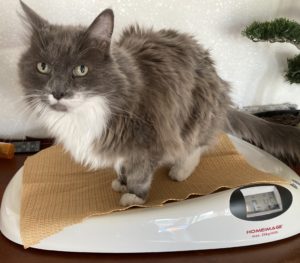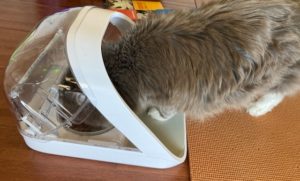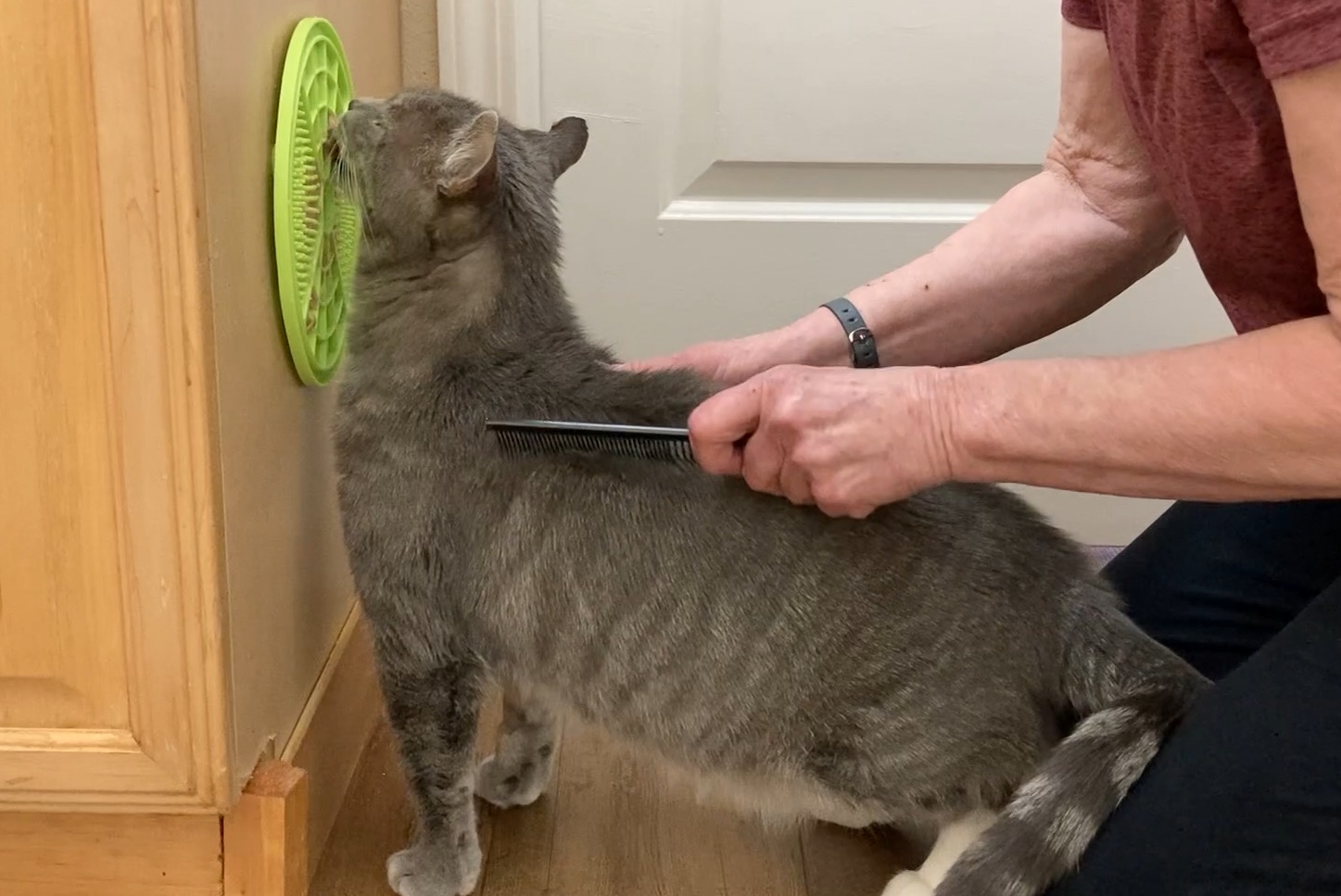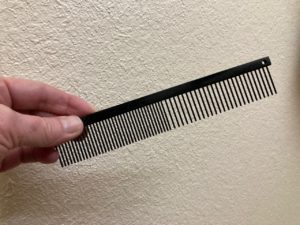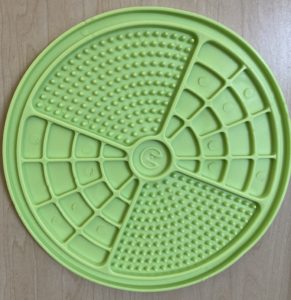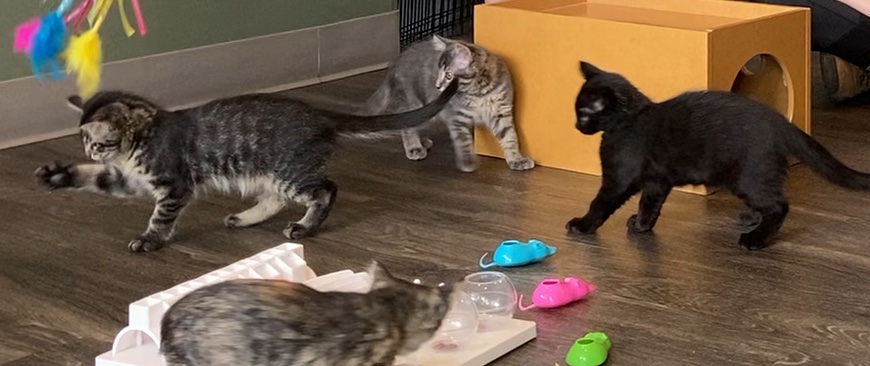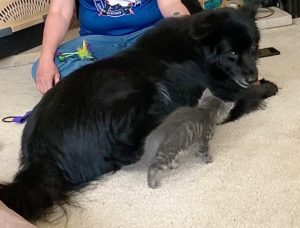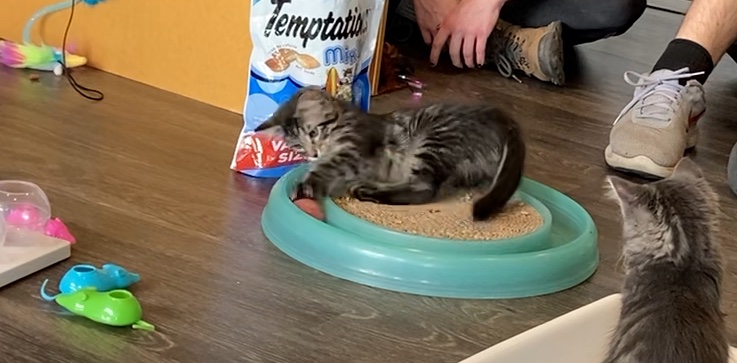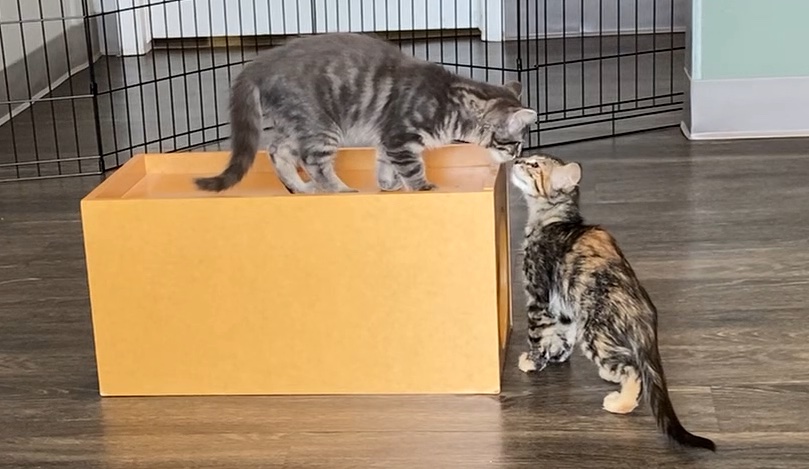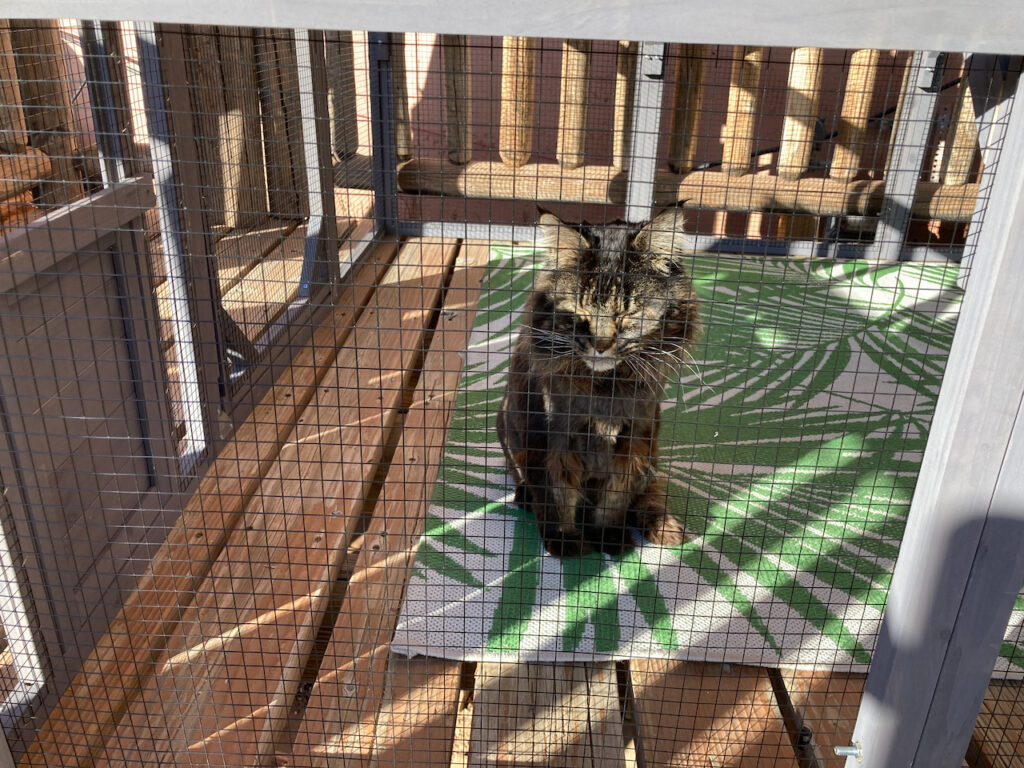 In the U.S., it has become common to keep cats solely indoors. Indoor cats live longer – they are not run over by cars, hunted by coyotes, or injured in cat fights.
In the U.S., it has become common to keep cats solely indoors. Indoor cats live longer – they are not run over by cars, hunted by coyotes, or injured in cat fights.
However, there is a cost to this safety and security. Indoor cats have fewer opportunities to exercise and don’t receive the mental stimulation from hunting and exploring the outdoors.
Both cats and zoo animals are captives in the environments we provide for them. Like zoo animals, cats need enrichment to maintain their health and welfare. A safe place outdoors can provide cats with enrichment from the scents, sounds and views of the outside world.
a catio is a safe place outdoors for cats
I lived in a townhome for 13 years. The common grounds in the complex were spacious and like a park. I was able to walk my cats daily; I also built a small cat enclosure (footprint was 3′ by 6′) that the cats could access by a pet door in the sliding patio door.
I moved about a year ago to a larger, two story house and had plans for a grander cat enclosure. A catio is a safe place outdoors for cats that is large enough for some humans to hang out in. There is a deck on the back of my house which was not being used very much and seemed to be a purrfect place for a catio for me and the cats to hang out.
Due to finances and the desire to get an enclosure up quickly, I chose a pre-fabricated cat house. The Aivutuvin-AIR52 is a frame structure made up of galvanized mesh panels. The footprint is about 6′ by 10′. It has a peaked roof (height about 6′) and has a door for human access in the front.
I had assembled the smaller cat enclosure at my townhome myself. This time, the size of the project was intimidating, so I hired a professional handyman to help with the installation. This proved to be a good idea as assembling the panels that make up the sides, back and front were a 2-person job.
The catio opened for use yesterday. Here are some snapshots of the construction process.

The location: south-facing porch. A “sail” has been put up to offer some shade.

An insert with a pet door is put in the window adjacent to the catio.

Construction phase: note the shelves for the cats to sit on and the swinging bridges.
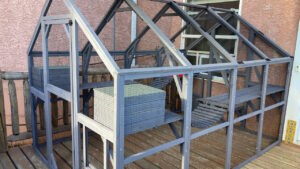
Construction is complete. A tarp will go over the rear half of the catio to provide more shade.
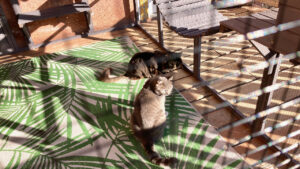
The catio is open for business. The cats have successfully negotiated entering the enclosure using the pet door in the window insert.
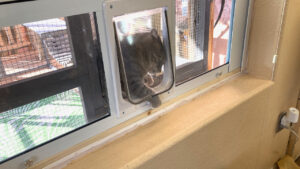
Time for a break and a snack. Gus comes inside using the pet door in the window.
A catio is a safe place outdoors for cats. I will still leash walk my cats daily, weather permitting, but the catio will allow them to choose to go outside when they want to. It is large enough for some deck furniture and I am looking forward to spending time outside on the porch with my cats.

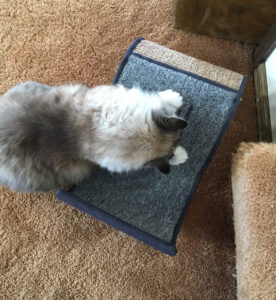
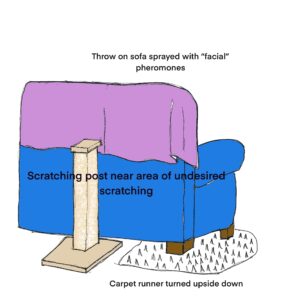 Use a synthetic pheromone spray such as “Feliway” Classic or Comfort Zone Calming. These are synthetic versions of the secretions cats deposit by rubbing their cheeks against things. To avoid staining your sofa, we can spray a throw or blanket that we drape over the sofa. Initially, you will need to spray this daily.
Use a synthetic pheromone spray such as “Feliway” Classic or Comfort Zone Calming. These are synthetic versions of the secretions cats deposit by rubbing their cheeks against things. To avoid staining your sofa, we can spray a throw or blanket that we drape over the sofa. Initially, you will need to spray this daily.
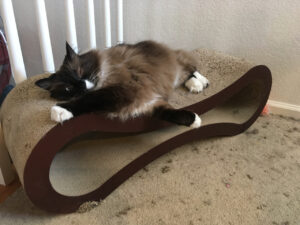
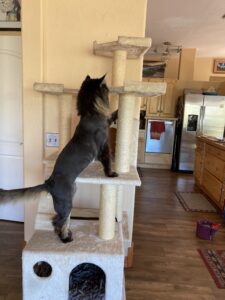 This tall cat tree is located in the interior of the house away from doors and windows. The younger cats (6 years), Zelda and Gus, use this tower to snooze on the upper levels or to get to the tops of the kitchen cabinets. Although it does meet the recommendations for the ideal scratcher, the cats don’t scratch on this tree all that much.
This tall cat tree is located in the interior of the house away from doors and windows. The younger cats (6 years), Zelda and Gus, use this tower to snooze on the upper levels or to get to the tops of the kitchen cabinets. Although it does meet the recommendations for the ideal scratcher, the cats don’t scratch on this tree all that much.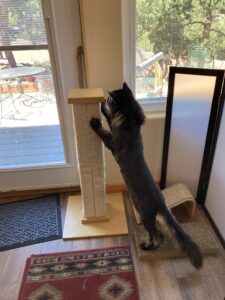 This very tall post (it is 41″) with sisal fabric is at the front door. It is popular with everyone, from the 17 lb Coon cat to the small senior at 8 lb. All four cats scratch before going out for a walk or when they sit to look out the window in the front door. The horizontal cardboard scratchers at the front door also see consistent use. The cats tend to use these with all 4 feet on the scratcher.
This very tall post (it is 41″) with sisal fabric is at the front door. It is popular with everyone, from the 17 lb Coon cat to the small senior at 8 lb. All four cats scratch before going out for a walk or when they sit to look out the window in the front door. The horizontal cardboard scratchers at the front door also see consistent use. The cats tend to use these with all 4 feet on the scratcher.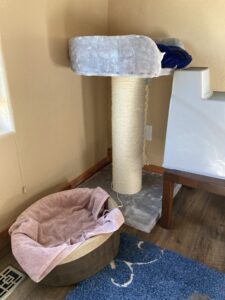 The sisal-covered base of this extra-large cat bed is tall enough for the large Maine Coon to scratch. This cat bed is located in the bedroom. It was purchased for the Maine Coon cat but has been taken over by 8 lb Athena, who sleeps in this bed or in her heated bed at the base of the scratcher. When she gets out of bed, she stretches and scratches on this scratcher. This is used infrequently by the other three cats.
The sisal-covered base of this extra-large cat bed is tall enough for the large Maine Coon to scratch. This cat bed is located in the bedroom. It was purchased for the Maine Coon cat but has been taken over by 8 lb Athena, who sleeps in this bed or in her heated bed at the base of the scratcher. When she gets out of bed, she stretches and scratches on this scratcher. This is used infrequently by the other three cats.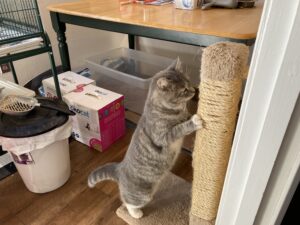
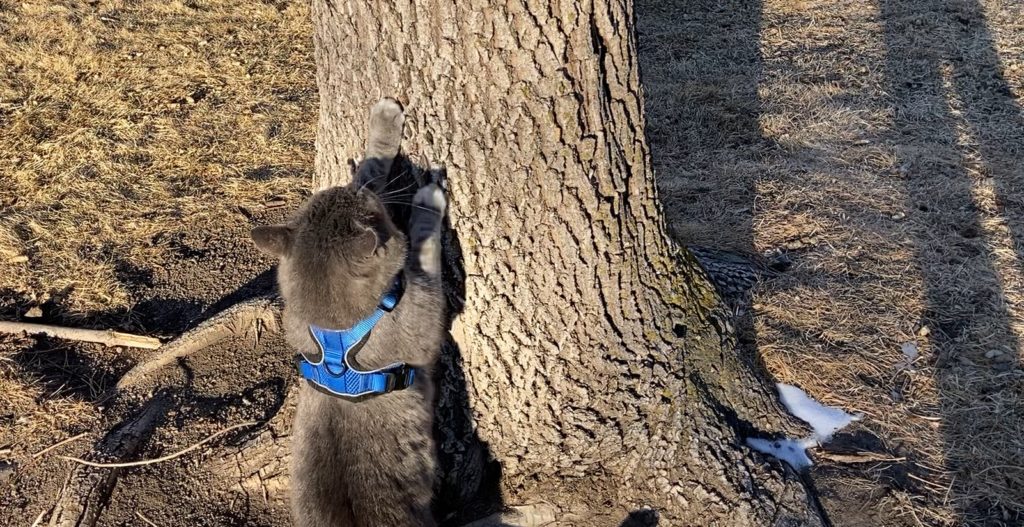
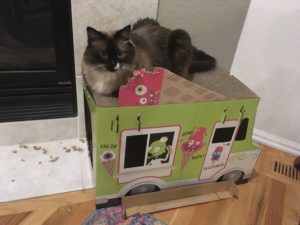
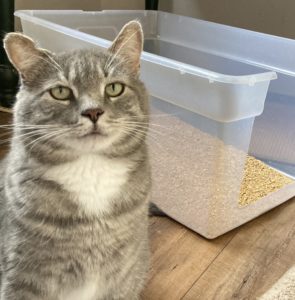 What can you do when your cat thinks outside the box?
What can you do when your cat thinks outside the box?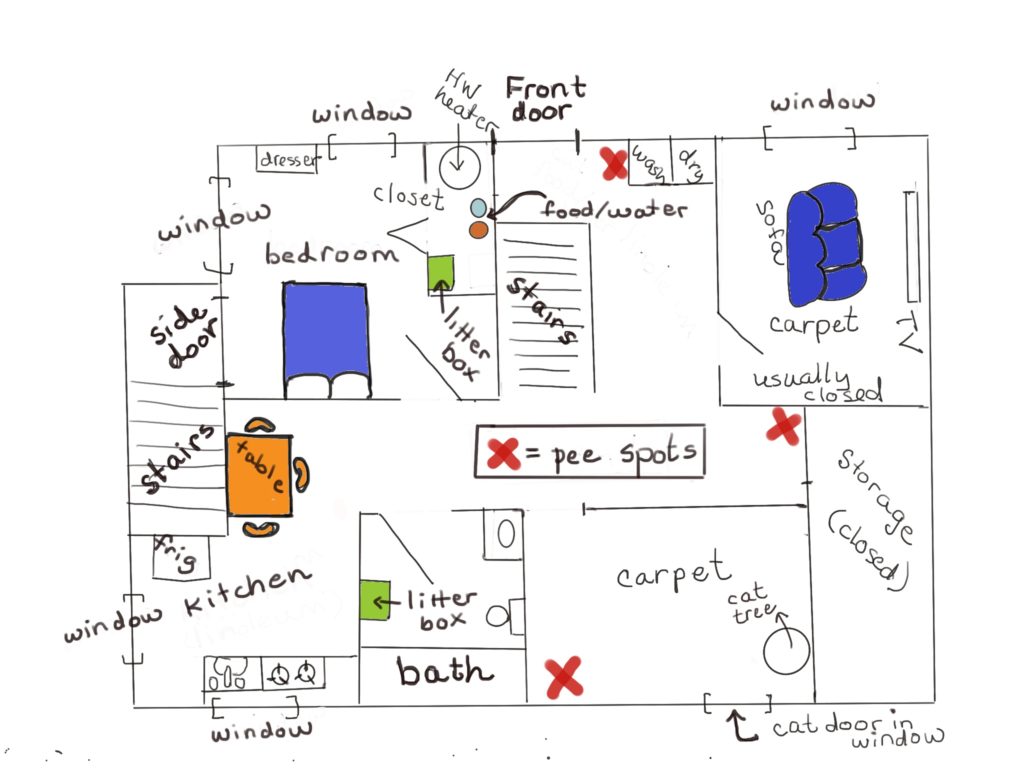
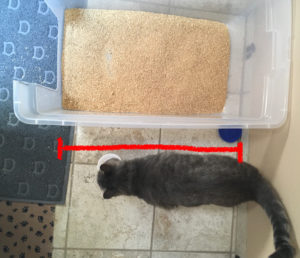
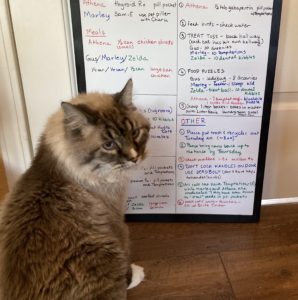
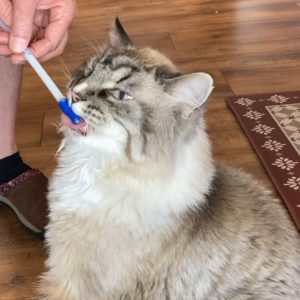 Mix up the routine from time to time – change is part of living. For example, in the medicating routine, you may wish to introduce and practice other ways of offering a pill to your cat – say with a pet piller or offering a “dummy pill” in a squeeze up treat.
Mix up the routine from time to time – change is part of living. For example, in the medicating routine, you may wish to introduce and practice other ways of offering a pill to your cat – say with a pet piller or offering a “dummy pill” in a squeeze up treat.